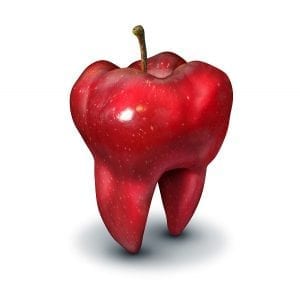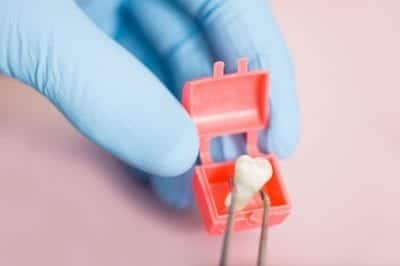Do you have a wisdom tooth that’s infected? A wisdom tooth or teeth infection can be quite painful or even life-threatening. Here’s what you should do about it. Also known as third molars or your third set of molars, your wisdom teeth usually become visible by erupting from out of your gum line at the back of your jaw when a person reaches his mid-twenties or late teens.
To be more specific, wisdom teeth erupt between the ages of 17 and 25. This is why they’re referred to as “wisdom” teeth, they’re supposed to appear when you’ve already come of age and you’re “wiser” (although this isn’t necessarily the case). When you get a wisdom tooth bacterial infection, it typically entails a dentist visit in order to address your severe pain.
Reasons Behind Wisdom Tooth Infection
Anyone with the misfortune of going through a wisdom tooth infection will probably inform you that you should avoid it at all costs. Its pain is so great it’s second only to cancer pain in severity. What’s more, this type of pain should be treated immediately so that any more potential complications can be avoided.
Here’s what happens when you have an infection involving your wisdom tooth.
- Out of Reach and Uncleanable Wisdom Teeth: This infection happens primarily because wisdom teeth are positioned nearest your throat, which means it’s hard to reach them through your floss or toothbrush. This means they’re likely to be left improperly cleaned or neglected. As such, debris such as plaque and food can accumulate between and on the teeth, resulting in the growth of bacteria.
- Partially Erupted Wisdom Teeth Are Most Vulnerable: There are even times when wisdom teeth only partially erupt as well. When this comes about, the tooth might be covered with a gum tissue flap, which can serve as a pocket for trapping bacteria that’s fed by plaque and food, resulting in pericoronitis.
- Pericoronitis and What It Entails: The pericoronitis condition refers specifically to soft tissue bacterial infection surrounding the crown or non-root portion of a partially erupted tooth. The crown is normally positioned above the gum line. Most cases of pericoronitis involve the wisdom teeth but they can occur on other teeth as well. Also, infection is a common symptom linked with wisdom teeth impaction.
- The Origins of the Pericoronitis Term and Other Details: Here is the etymology of the “pericoronitis” term. Its root words are “peri”, meaning “around”, and “coron”, referring to the “crown” of the tooth. Meanwhile, the “itis” suffix refers to the presence of inflammation or the body’s response to an infection (as in the case of “appendicitis” or “inflammation of the appendix”).
- A Breeding Ground for Bacteria: Like a Petri dish, the opening created by a partially erupted wisdom tooth can serve as a bacterial breeding ground, resulting in pericoronitis or a wisdom tooth infection. Such an infection can get quite challenging to properly treat since it’s a serious condition. It’s like the hydra of ancient Greek mythology; it’s hard to get rid of and wrong attempts to deal with it can worsen the problem.
- Flap of Gum that Exacerbates Your Problem: Whenever your wisdom teeth partially erupts or don’t appear above the gum line all the way, a flap of gum will end up covering where the partial eruption began. This makes healing your infection or pericoronitis unlikely until the gum flap is removed and your wisdom tooth erupts the whole way through. Otherwise, wisdom tooth removal is necessary, especially if it erupted in an askew or problematic angle.
- The Impaction of Wisdom Teeth and Human Evolution: Your third set of molars gets impacted whenever they don’t grow in properly or all the way. A child has two sets of teeth, which are the milk teeth and the permanent teeth. Perhaps through a quirk of human evolution, most human jaws lack enough space to make way for this third set of molars, thus it’s common for the wisdom teeth to erupt only partially.
Symptoms and Signs of a Wisdom Tooth Infection

Your wisdom teeth are the last teeth to erupt from your mouth. Unfortunately, as previously noted, most human jaws are not large enough to accommodate this last set of permanent teeth, leading to some serious issues and complications.
Here are the symptoms and signs of a wisdom tooth infection or pericoronitis:
- Pain in the Tooth Area: This is the most common sign of pericoronitis. There’s pain where the wisdom tooth is supposed to be.
- Pain Beyond the Tooth Area: There are also cases wherein the infected teeth could also cause further throbbing aches that stretch across the throat, neck, and jaw.
- Headaches: Sometimes, the pain from the infected wisdom tooth can be so severe that it’s already causing headaches.
- Soreness and Swelling: A wisdom teeth infection can also lead to swollen lymph glands from under your jaw and sore throat. The swelling can also extend to your entire face.
- Pus Drainage: As gross as it sounds, pus can also form from the infected tooth. Pus is the yellowish and whitish gooey substance common in infections that’s actually composed of dead white blood cells.
- Bad Smell and Taste: Because of the presence of pus from your infected tooth, you’ll suffer from halitosis or bad breath and a sour taste emanating from the infection site.
- Difficulty in Chewing and Eating: Your infected wisdom tooth can be so painful that it’s difficult to chew food and eat without feeling the severe aches from your infection or pericoronitis.
Pericoronitis typically happens when wisdom teeth undergo the following complications:
- The Wisdom Teeth Become Partially Erupted: A tooth that’s partially erupted is one where the crown portion of the tooth in question has only partway penetrated through the gum line. This may be a temporary position since the tooth is in the process of eruption. However, once the tooth gets impacted, the position becomes a permanent one.
- The Wisdom Teeth Become Impacted: Teeth impaction happens whenever your teeth partially erupt or fail to erupt into the dental arch during the designated development window. Impaction also means that no further progress through the gum tissue will happen.
- The Wisdom Teeth Are Growing Sideways: Many of the symptoms listed on this article are caused not only by partially impacted teeth but also by teeth eruption wherein the teeth grow sideways.
- The Wisdom Teeth Ends Up Trapped Between Gum and Bone: Wisdom teeth that get trapped between bone and gum can get really painful really fast and develop an infection because there’s a lot of space left from where the teeth is supposed to erupt.
- Penetration of the Developmental Sac: During the point of the eruption process wherein the sac is penetrated and the tooth first pokes out its crown through the gum tissue, the sac’s integrity is loss. If the tooth doesn’t erupt any further, bacteria from your mouth can easily congregate in that space and colonize it, resulting in pericoronitis.
- A Gum Flap Covers Where The Wisdom Tooth Was Supposed to Erupt: As mentioned earlier, the area or pocket where the wisdom tooth is supposed to erupt can end up covered by a flap of gum.
- Bacteria and Food Get Trapped Under the Gum Flap: The gum flap is where pieces of food and bacteria tend to propagate, leading to an infection. This area should be cleaned properly or, barring that, removed altogether.
There are also two types of pericoronitis.
- Transient Pericoronitis: In cases where the wisdom teeth are coming in, the infection should be a transitory or temporary one. After the teeth fully erupts and clears the gum line, it should be possible to properly floss and brush, thus preventing bacterial growth and infection to happen.
- Persistent Pericoronitis: However, in the cases where the tooth is partially erupted and impacted as well as growing sideways, then frequent and repeated episodes of infection should occur because you’re unable to clean the improperly erupted tooth out.
It’s impossible to clean a wisdom tooth as long as it remains partially erupted. You will experience repeated infections on that tooth until its eruption is assisted or until it’s extracted from your mouth altogether.
If you have the inkling suspicion that one or both of your wisdom teeth is/are infected, then you should call your dentist ASAP to have it fixed. This dental professional will diagnose the infection or decide whether another dental issue exists.
From there, you can start treatment immediately. Depending on the severity of the infection and how the wisdom tooth or teeth erupted, there might be a need for a dental surgeon and bone grafting to happen.
The Types of Wisdom Tooth Infection Treatment

There are a number of ways to go about wisdom teeth infection or pericoronitis treatment, including the conservative approach or outright surgical extraction. If your wisdom teeth have erupted without problems, the dentist may choose to leave them alone and watch their development over time.
- The Conservative Approach: The dentist and/or oral surgeon might recommend the conservative approach to treatment once you begin experiencing pain from your pericoronitis. This involves using loads of saltwater rinses, mouthwashes, Over-the-Counter or OTC pain relievers, and antibiotics for your infection.
Even if you’re being prepared for surgery, you can use an ice pack to reduce the swelling of your face, rinse your mouth with saltwater, or take some OTC painkillers such as aspirin, ibuprofen, or paracetamol (depending on which one you’re not allergic to).
The conservative approach to wisdom teeth pericoronitis treatment is usually used on patients with certain health problems such as cardiovascular disease or bleeding disorders (like hemophilia), thus undergoing surgery isn’t an option for them. However, surgery remains the most immediate path for pain relief and infection prevention.
- The Surgical Approach: Once the pericoronitis worsens, your best chance of relief will naturally be surgery. Surgical extraction of a partially erupted and impacted wisdom tooth that might’ve even grown side ways is a common method of preventing pericoronitis complications.
According to experts, when the tooth becomes infected, it causes complications and about 85 percent of all wisdom teeth require removal. Therefore, it’s also common for dentists to recommend extraction from the outset to prevent further exacerbation of the infection in question.
However, not all patients suffering from wisdom teeth infections are candidates for surgery. As mentioned earlier, some cannot go through surgery or even simple dental procedures like non-wisdom tooth extractions, so they might instead need to go through the conservative approach.
The Specifics of Wisdom Tooth Infection Treatment

Before anything else, the condition should first be evaluated then treated by your dentist or possibly a dental surgeon depending on how severe the impaction is. In the majority of cases, they’ll do the following:
- Scraping and Irrigation: Instead of relying on antibiotics alone to kill bacteria, the dentist can also reduce the bacterial load by irrigating (flushing) and scraping away the accumulated debris within the area in question.
- A Course of Antibiotics: You’ll also be placed on a course of oral antibiotics within 24 hours (since it takes a day for the antibiotics to begin working).
- Antibacterial Oral Rinse: You’ll be prescribed chlorhexidine or some other antibacterial oral rinse to reduce the bacterial load and clean the infected area.
- Teach You How to Irrigate: If tooth access is possible, show you the techniques you can use to flush out the space between the gum tissue and tooth, which is the area harboring the bacteria using a blunt-tipped irrigation syringe.
- Tooth Extraction: In case the decision to extract your wisdom tooth has been made, your dentist will wait for the infection to resolve itself first before the process can be started. After all preparation is done, a time frame of week is usually needed.
There are times when the procedure may end up more complex than usual, involving dental surgery in case the impacted tooth hasn’t even penetrated all the way through the gum line or even the bone, thus necessitating the slicing open of the gums and stitching afterwards.
Seeking Treatment for Infected Wisdom Teeth
Dentists typically treat the infected wisdom tooth or teeth by prescribing antibiotics. He can also recommend that you avail of OTC pain relievers and numbing gels to assist in relieving your discomfort. He can also advise for you to gargle warm saltwater for good measure since it’s also an effective way to soothe your aches while at the same time speeding up your healing.
Extracting the wisdom tooth isn’t always needed. There are cases wherein the infection can clear up and you won’t have issues with the tooth. However, recurring infections on impacted teeth that are hard to stave off because of their awkward placement necessitates removal of the teeth in question once the infection has cleared up.
Whether you choose dental surgery to fix your problem or not, you should still visit a dentist and consult with him if you believe you’re suffering from a wisdom tooth infection.
Thantakit International Dental Center is Thailand’s longest established dental center. Situated in Bangkok, our clinic is renowned across the world as a destination for world-class dentistry, with most of our patients flying to us from Australia.
Please contact us today and get a FREE dental consultation.












